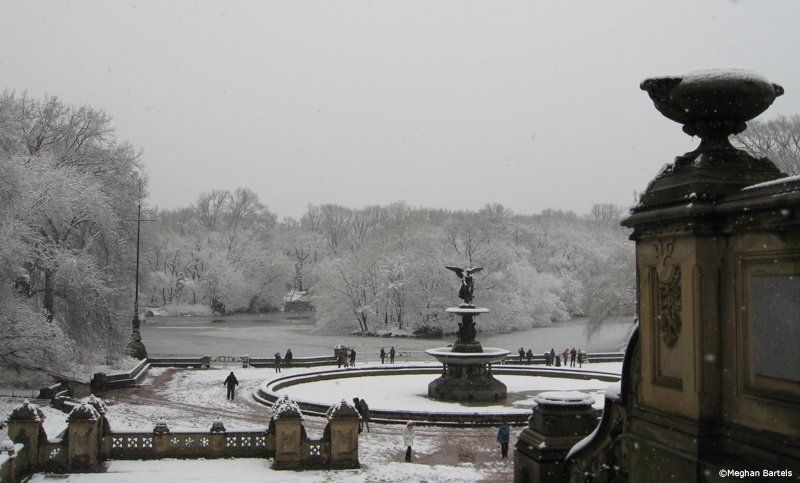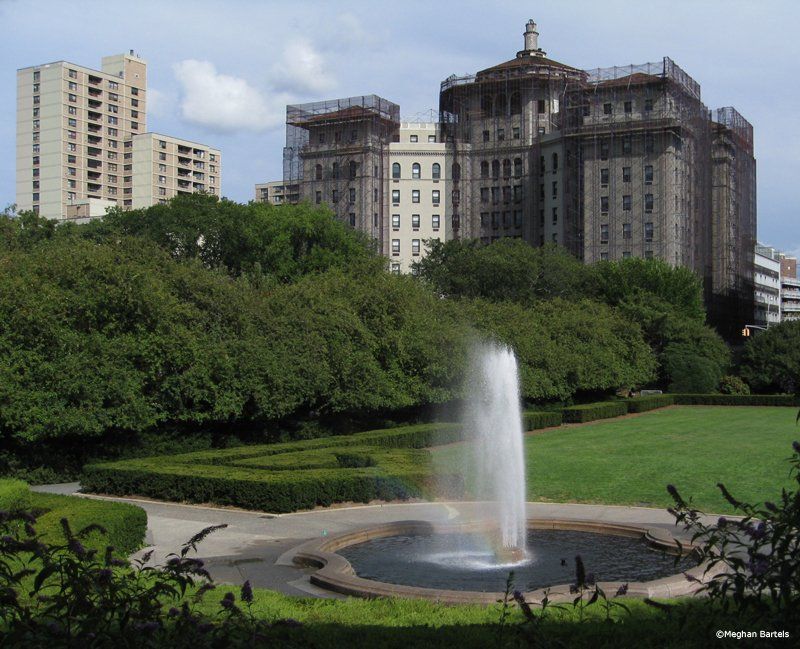See the New Times Square New Year's Eve Ball Up Close
Find out how you can take home a piece of the old New Year's Eve ball!



Raking leaves and shoveling snow are never popular chores — but imagine that instead of your townhouse sidewalk or suburban lawn, you were responsible for six percent of Manhattan. That’s just part of the job description for John Dillon, who oversees the horticulture department of the Central Park Conservancy. For him, getting ready for winter starts right after Labor Day and relies on dozens of staff and volunteers. “It’s a gigantic undertaking,” Dillon says.
It may not look gigantic from beyond the park gates, but here’s what fills Dillon’s winter task list and keeps Central Park running smoothly when the weather outside is frightful.

By Thanksgiving each year, Dillon needs the park’s pipe system winterized — and that alone is a full time task for eight people over about two months. That’s because the Great Lawn alone has about 300 sprinkler heads for irrigation.
Translate that across the whole park and factor in the hundreds of valves for hoses, 140 drinking fountains, and six ornamental fountains, and the pipes add up quickly. The project is getting larger every year as more sections of the park are being restored: the irrigation system has doubled in size over the past ten or fifteen years, Dillon says.
Any water left in those pipes has the potential to freeze, which can damage the pipes themselves. So each piece of the system gets a blast of fresh air to start the winter. “We hook up a compressor at a central point and force compressed air through the system and out each one of those components,” Dillon says.
That doesn’t quite cover all of Central Park’s water systems though. One key exception is the waterfalls, which flow throughout the year, thanks to pipes buried deep enough to withstand the cold.

After the pipes are clear, the next task is to deal with the fallout from the park’s foliage display: fallen leaves. “You have a pretty short window to get the leaves cleaned up, Dillon says. “The goal is you want to clear the leaves before the snow starts,” since snow makes them harder to clear.
In the forested areas of the park, Dillon and his crew let the leaves stay. And in some lawn areas, park staff can use special mower attachments that grind leaves back into the soil.
But even after these measures, the park has the equivalent of a leaf pile a few thousand cubic yards large, Dillon says. Those leaves, which come off pathways, benches, plantings, and the like, are carted up to a compost area around 102nd Street. By the next spring, they’ve become enough compost to take care of the park’s planting needs.
Among the pipe-emptying and leaf-composting, Dillon and his team also plant bulbs like tulips and daffodils for the spring—about 150,000 this year. They aerate the lawns to relieve the compaction that happens when thousands of visitors walk across the grass. “It kind of looks like a wine cork coming out of the ground,” Dillon says. The aeration process also makes the lawn more receptive to new seeds.
And while park staff prunes trees throughout the year, fall and winter is a prime time for cutting back. “When you’re pruning, you’re actually injuring the plant to a certain extent,” Dillon says. “Winter’s ideal because there’s really no organisms that are going to attack that pruning cut.”
When the snow finally starts to fall, the park’s biggest concern is clearing the 58 miles of walkways, Dillon says. That takes 20 plows, two dozen snow-throwers, and a dozen snow brooms for more sensitive surfaces.
For a typical snowfall of six inches or so, clearing is routine, although it’s a race against time—or rather, a race against the New Yorkers who flock to enjoy the park’s picture-perfect blanket of snow. “It’s really the park patrons that are the biggest challenge,” Dillon says. “Our goal is to get as much of that snow cleared before the park patrons are in the park.”
And of course, heavier snowfalls need more planning. “Blizzards are another story,” Dillon says, noting it can be difficult to make sure important park staff are able to actually reach the park when transportation in the city gets messy. “A blizzard can mean some long days for us.”
New York winters don’t last six months, but they do for Dillon and the rest of the Central Park maintenance team.
Next, read more about the Top 10 Secrets of Central Park. You can contact the author on Twitter @meghanbartels.
Subscribe to our newsletter